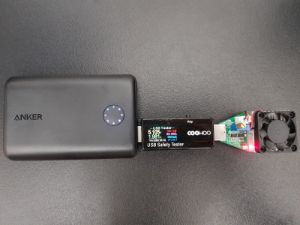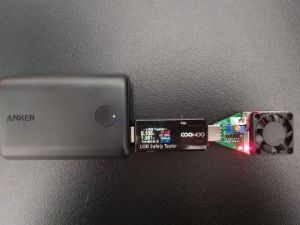How Much Energy a Power Bank Actually Has? The Real Battery Capacity
Explained.
The Rated Battery vs. Real Battery Capacity of a Power Bank
Rated battery capacity is essentially the maximum amount of power bank’s energy, as rated at 3.7 Volts.
Real battery capacity is the exact amount of energy that can be used to charge your electronic devices. This is not the same number advertised on power banks.
The common myth is that if you buy a 10,000 mAh power bank, you’ll be able to charge a mobile phone with a battery of 2,500 mAh four times. Simply divide the power bank’s battery capacity by your mobile phone’s battery capacity, right?
Sadly, the reality is not so straightforward.
Most power banks use Li-ion batteries. The average voltage of those batteries is 3.7V. Manufacturers calculate the battery capacity of their power banks based on a voltage of 3.7 volts.
However, mobile phones and tablets have a voltage of 5V. It’s the USB standard. Most power banks indicate a voltage output for their ports ( e.g., 5V/1A, 5V/2A , etc.).
Due to the conversion to 5V, the capacity drops. Here’s the simple formula:

Using the example of a 10,000 mAh power bank:

We started with 10,000 mAh, and now we have 7400 mAh. Already, 26% of the battery’s total rated capacity is gone. In this case, 10,000 mAh is the Rated Battery Capacity.
But 7,400 mAh it’s still not the real battery capacity.
Power Losses
The voltage conversion mentioned before is not the only conversion we must consider. A converter circuit located between the power bank and the charged device also creates power losses.
Furthermore, most electronic devices have lithium batteries, which operate at 3.7V. And again, another power conversion is needed. In consequence, more losses are generated.
Is that all? No. USB cables are also responsible for power losses due to internal resistance.
Once all those factors are summed up, they are expressed as a battery efficiency. It’s a convenient way for manufacturers to sum everything up in one number. Usually, it’s between 80% and 90%. Unfortunately, most manufacturers aren’t eager to share this with customers.
All those conversions and power losses have a significant impact on real battery capacity.
How to Test the Real Battery Capacity of a Power Bank
To calculate real battery capacity – the exact amount of energy in a power bank you can use to charge your electronic devices – we need to know the power bank’s actual capacity.
For this, we need three things:
- The fully charged power bank
- A USB tester that shows current and voltage.
- The mini-USB adjustable load receives energy from the power bank and releases it safely via the fan. This is a safe way to discharge a fully charged power bank and measure its real battery capacity.
At Charging Kick, we check the battery capacity of every power bank we review. This is the part of our system that shows you exactly what you can expect from each power bank.
The picture below shows a sample test of an Anker PowerCore II 10000.

Capacity Test - Start

Capacity Test - Finish
Once the USB tester and dummy load is plugged in with a constant load of 2 Ampere per hour and 5V, we have to wait until the power bank’s battery is completely dead. The tester shows the exact number of Amperes and Watt-hours of a tested power bank. Those numbers represent the Real Battery Capacity.
Anker PowerCore II 10000 has 6,086 mAh / 31 Wh of energy. This is the exact amount of energy you can use to charge your electronic devices. It’s not the advertised 10,000 mAh.
How to Calculate Battery Efficiency
The better a battery’s efficiency, the more resistant the battery is to power losses. It also gives you more energy to use. Unfortunately, manufacturers rarely share battery efficiency with customers. Luckily, when you know real battery capacity – and every product review on Charging Kick has it – you can calculate battery efficiency using the following formula:

Let’s use the Actual Capacity of the Anker PowerCore II 10000 to calculate its battery efficiency:

And there it is: the battery efficiency of the Anker PowerCore II 10000 is 82%. I wouldn’t consider this battery as highly efficient, only average.
Conclusion
The key takeaway is that the advertised capacity of a battery isn’t the energy you’ll get. As a rule of thumb, if you can’t check the real battery capacity, roughly ⅔ of a battery is usable. Charging Kick provides all the information you need in its product reviews so you can know exactly what each power bank is capable of.